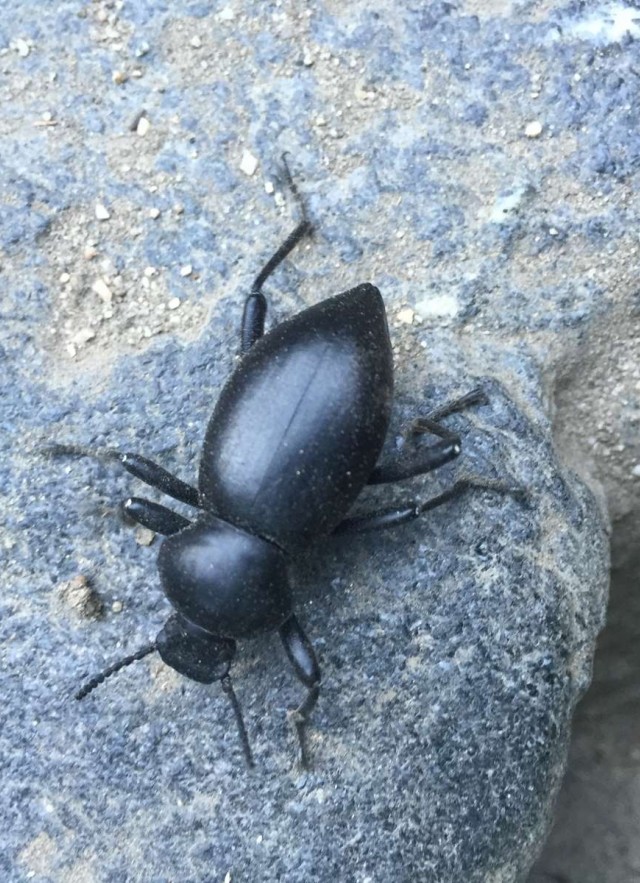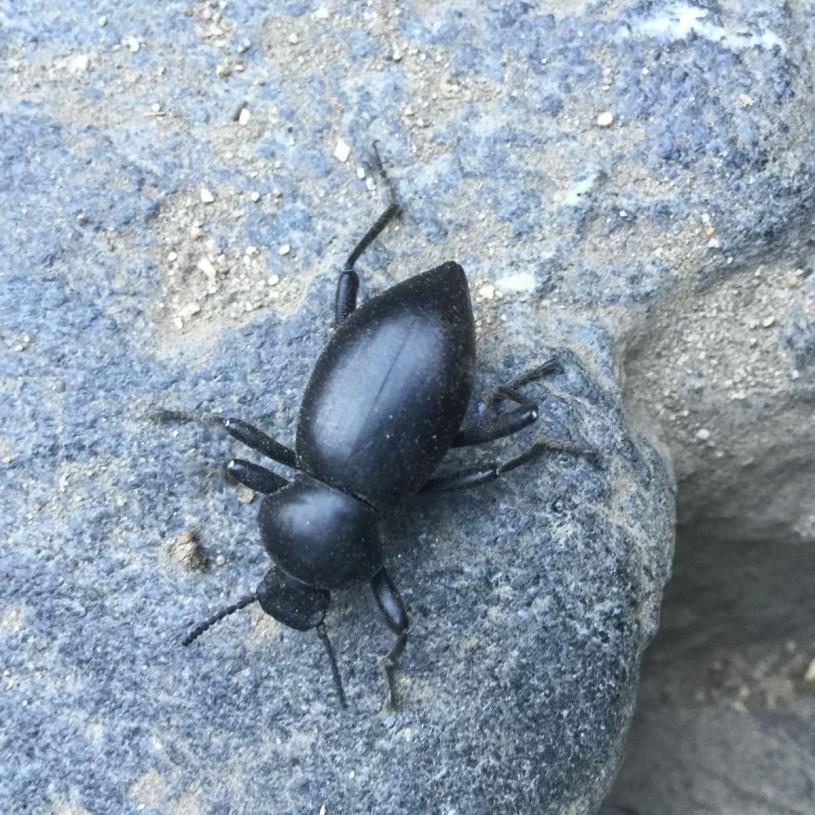The Hart Museum remains closed. Los Angeles County has approved a plan to transfer the William S. Hart Museum and Park from the County to the City of Santa Clarita.
Stink Beetle Hits the Trails
A sneak peek at NHM's Wild L.A. - A nature guide for Angelenos. The following is one of 100 species accounts in the book.

Stink beetles can be seen bumbling across almost any hiking trail in our local mountains and other natural areas. Hikers in Griffith Park often spot them. What are they doing? Since they can not fly—their shield-like front wings are fused together—they have to walk everywhere. Scientists have followed them and found out they are usually in search of food. They are so good at living in dry climates, they can get all the water they need from the plants they eat.

Chemical Defense = Not Dinner
If a stink beetle is disturbed, it has a few ways to escape trouble. Some species freeze and play dead—laying on their backs with all six legs stuck in the air. There is another strategy that is a bit more aggressive: The beetle will turn its back to the danger, and raise its rear end into the air. Though this sort of defensive posture might be threatening to some creatures, an animal like a hungry coyote may need further incentive to back off. The stink beetle ejects a dark brown, unpleasant smelling substance from the tip of the abdomen—the would-be predator will not make a meal of something so foul tasting. Stink beetle stink is made of a chemicals called quinones, which are also found in photographic developing agent.
Disable the Stink, Eat a Meal
Some animals have figured out how to deal with the stink. Skunks grab the beetles and roll them on the ground until they expel all of the chemicals. Grasshopper mice, take the beetles and stick their hind ends in the sand. The mouse then delivers a deathblow to the head, and then can safely eat its prey.
A Grub’s Life
Larval (immature) stink beetles are known as mealworms—similar to those that pet owners purchase to feed their lizards, and also a favorite for many local lizard species. They are heavily armored grubs that live their entire larval stage underground. Very little is known about their habits—they feed on plant material and fungi and rarely come to the surface.
**Thanks to Museum entomologists Brian Brown and Emily Hartop for their help in writing this and all the other insect accounts for the Wild L.A. - Nature Guide.